✓ Joining us on our Whatsapp Channel: 💬 Explore and Escape!.
Booking through us:
✓ 🏩 🛌 Handpicked Luxury Stays in Budget: Booking.com | Agoda.com
✓ 🍹⛱️ Deals on Private xfers, SIM Cards, City tours, Day trips : 📍🗺️ GetYourGuide | 🛵🧳 Klook
Welcome, Travelers! Immerse yourselves in Trier, an alluring destination within the cultural richness of Germany.
Nestled in the heart of the Moselle wine region, Trier is a city steeped in history and culture, with an abundance of treasures to discover.
From exploring ancient Roman ruins to wandering picturesque streets, there is no shortage of things to do and see in this enchanting town.
Trier, a popular tourist destination, is known for its rich historical heritage as one of the oldest cities in Germany.
The city is particularly renowned for its well-preserved Roman ruins, including the Porta Nigra and the Imperial Baths, which attract visitors from all over the world.
In relation to ingelheim and flensburg, Trier’s historical significance predates both these destinations by several centuries, making it a unique site to explore for history enthusiasts.
1. Porta Nigra
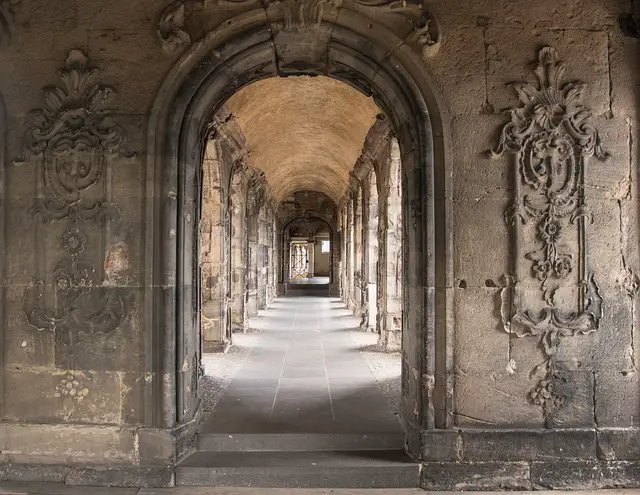
A UNESCO World Heritage Site and a Roman city gate in Trier, Germany.
What to see or do: Visit the Porta Nigra and explore its ancient architecture, including the large stone blocks, intricate carvings, and narrow passages.
Learn about its history as a defensive structure and a Christian church during the Middle Ages.
Don’t miss: The opportunity to climb to the top of the Porta Nigra for a stunning view of Trier, and to see the fascinating exhibits inside the gatehouse.
Insider travel tips: To avoid the crowds, visit early in the morning or late in the day.
If you’re interested in Roman history, take a guided tour to maximize your understanding of the gate’s historical significance.
Additionally, be sure to wear comfortable shoes, as there are many narrow steps to climb when exploring the Porta Nigra.
2. Aula Palatina
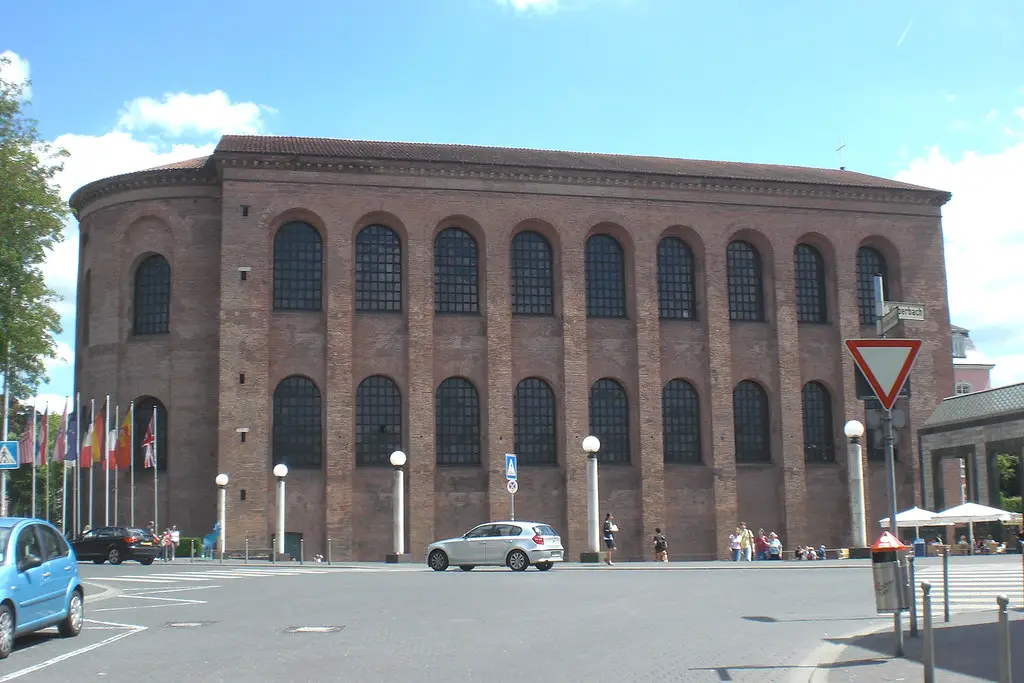
Aula Palatina, also known as Basilika, is an ancient Roman palace located in Trier, Germany.It was built between 306 and 337 AD by Emperor Constantine I.
What to see or do: Visitors can admire the impressive architecture and size of the building, as it measures approximately 67 meters in length and 27 meters in width.
The Aula Palatina is considered one of the most impressive remaining Roman structures north of the Alps.
Don’t miss: Make sure to check out the intricate details of the interior, such as the Corinthian capitals and the two-story columns.
The Aula Palatina is also home to an interesting exhibit showcasing Roman building techniques.
Insider travel tips: Visit early in the morning or later in the evening to avoid crowds, or consider joining a guided tour for more in-depth information.
The Aula Palatina is also conveniently located near other historical landmarks, such as the Porta Nigra and the Roman Amphitheater.
3. Cathedral of Trier
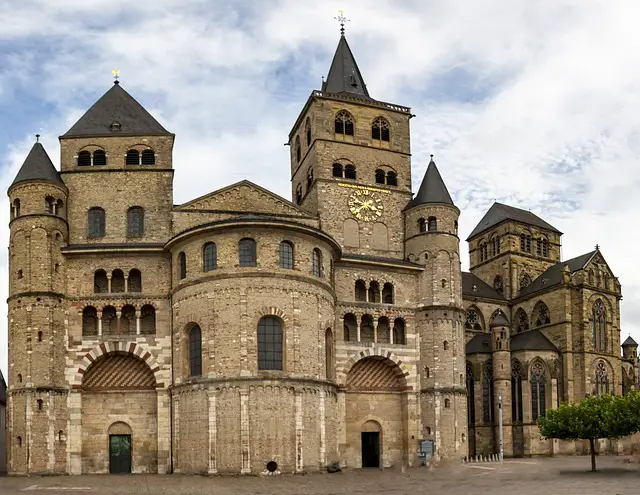
A Roman Catholic church in Trier, Germany.It is the oldest cathedral in the country.
What to see or do: View the remarkable architecture, featuring a stunning mix of Romanesque and Gothic styles.
Visit the many chapels, including the Chapel of St. Helena, said to hold the relics of the cross upon which Jesus Christ was crucified.
Don’t miss: The High Altar, considered to be one of the finest examples of goldsmiths’ work in the world.
The holy robe of Christ which is believed to be the robe worn by Jesus on the day of crucifixion also is on display here.
Insider travel tips: – Arrive early to avoid crowds and allow plenty of time to explore.
4. Imperial Roman Baths
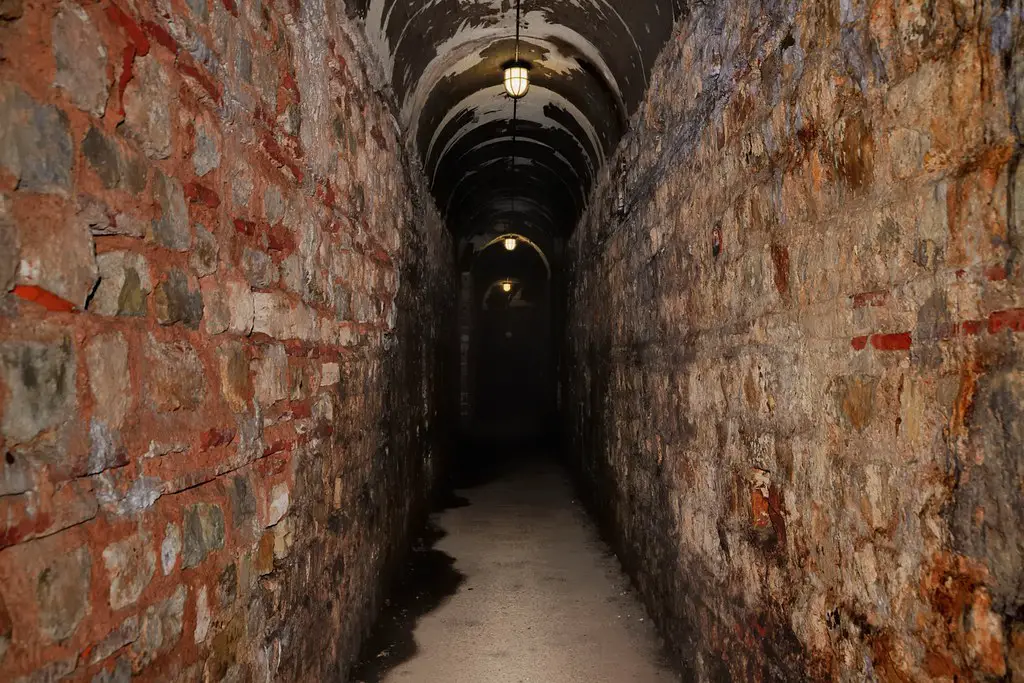
The Imperial Roman Baths in Trier are ancient ruins from one of the largest and most impressive bath complexes of the Roman Empire, dating back to the 4th century AD.
What to see or do: Visitors can explore the extensive ruins of the baths, including the caldarium, tepidarium, frigidarium, and natatio, and gain insight into the daily Roman bathing routine.
The site also features multimedia exhibits that help bring the history of the baths to life.
Don’t miss: Don’t miss the opportunity to see the intricate mosaics that decorate the floors of the baths, including depictions of sea creatures, geometric patterns, and mythological scenes.
The remnants of the hypocaust heating system are also fascinating to see.
Insider travel tips: – Visit early in the morning or late in the day to avoid crowds and enjoy a quieter, more peaceful experience.
5. Amphitheater
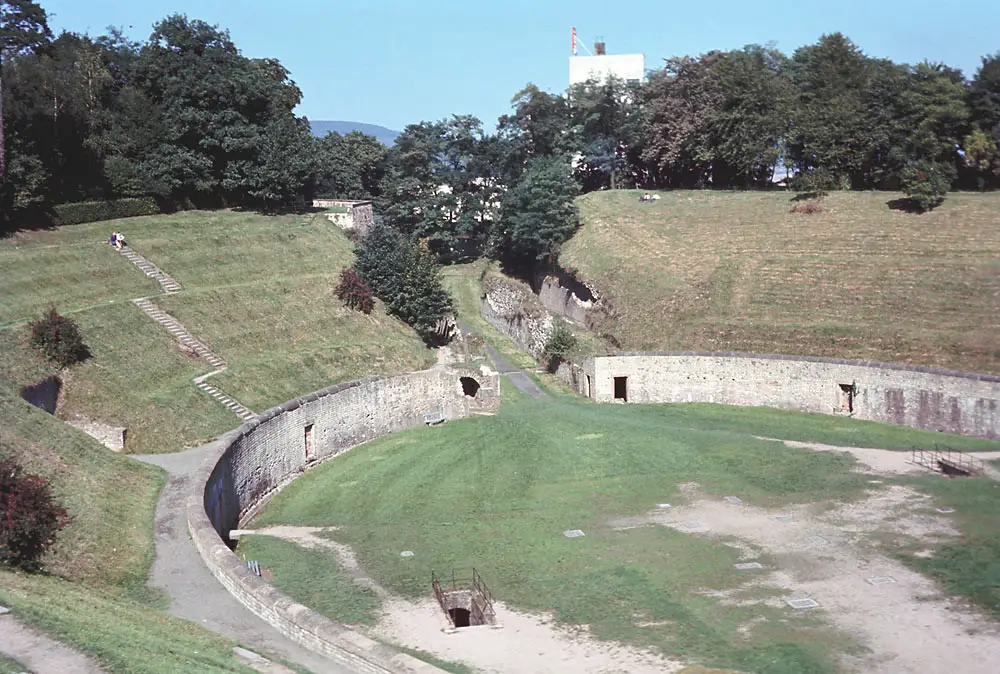
Ancient Roman amphitheater in Trier, Germany
What to see or do: Explore the well-preserved arena and structure of the amphitheater, which is one of the largest in the Roman Empire.
Don’t miss: Check out the underground chambers where man and beast prepared for battle, as well as the impressive double-layered arches at the entrance.
Insider travel tips: Arrive early to beat the crowds and take advantage of the audio guide, which provides historical and architectural context for the site.
Keep in mind that the amphitheater is not fully accessible for those with mobility issues due to uneven terrain and stairs.
6. Basilica of Constantine
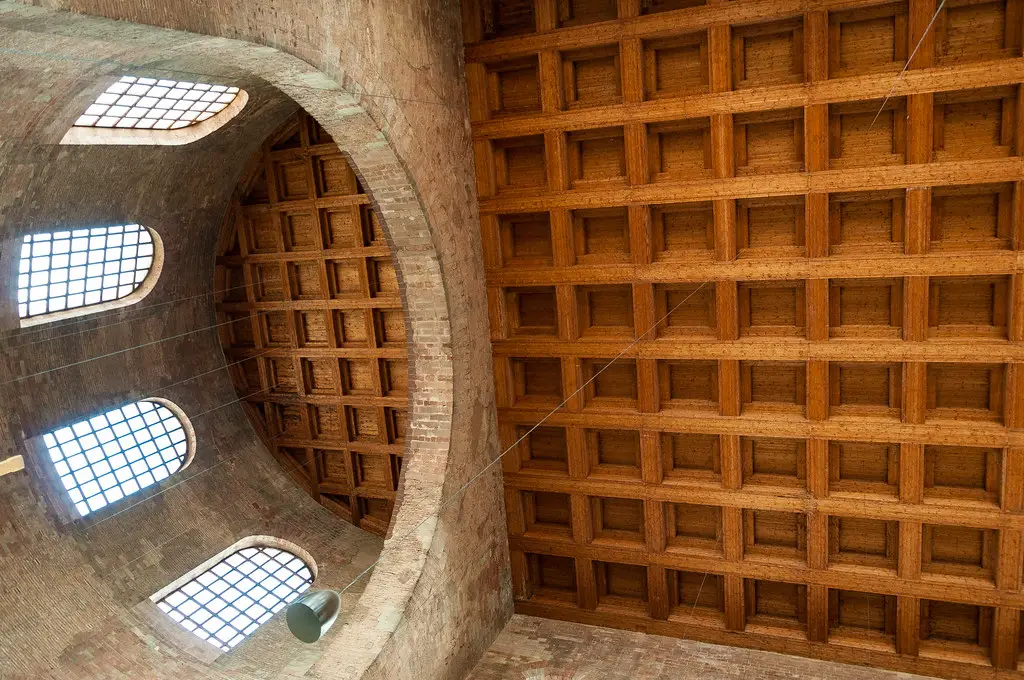
The Basilica of Constantine is an ancient Roman building located in Trier, Germany.
It was built in the early 4th century AD and was one of the largest structures of its time.
What to see or do: Visitors can explore the Basilica’s impressive architecture and learn about its historical significance.
The building features an enormous interior space, with towering rows of columns and intricate stone carvings.
Visitors can also see traces of the building’s original artwork and decoration.
Don’t miss: Don’t miss the opportunity to see the Basilica’s impressive collection of Roman artifacts.
The building currently houses a museum of Roman art and history, with exhibits ranging from mosaics and sculptures to pottery and household items.
Insider travel tips: – Be sure to check the museum’s opening hours in advance, as they can vary depending on the season.
7. Electoral Palace
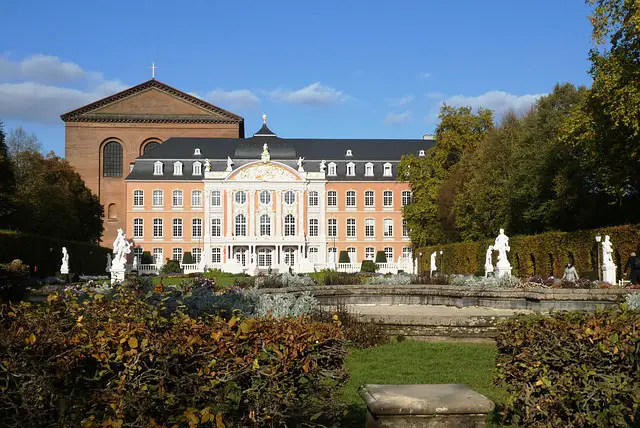
Electoral Palace is a grand Baroque-style building located in Trier, Germany.
Built in 1615, it served as the residence of the Archbishops and Electors of Trier until the late 18th century.
What to see or do: The palace houses the Rhineland Museum, home to a vast collection of exhibits from ancient Roman times to the modern era.
The grand architecture of the building is a sight to behold – take a guided tour to learn about its rich history and the important figures who resided there.
Don’t miss: Be sure to visit the palace’s stunning staircase, adorned with intricate frescoes and adorned with delicate sculptures and elegant chandeliers.
Insider travel tips: Visit during the holiday season to see the palace festively decorated and enjoy the Christmas market in the surrounding square.
Check the museum’s website for special exhibits or events.
8. Karl Marx House
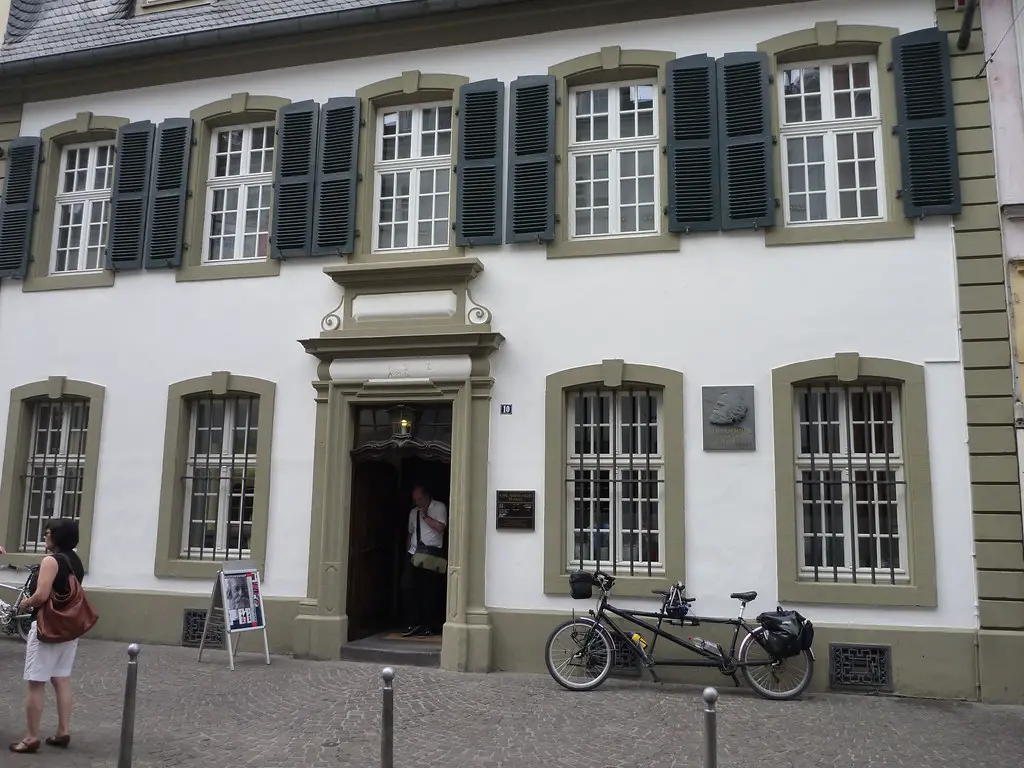
Karl Marx House is a museum dedicated to the life and work of German philosopher and socialist revolutionary Karl Marx.
What to see or do: – Explore the renovated 18th-century house where Marx was born in 1818.
Don’t miss: – The statue of Marx located outside the house.
Insider travel tips: – Visit early in the day to avoid crowds.
9. St Matthias’ Abbey
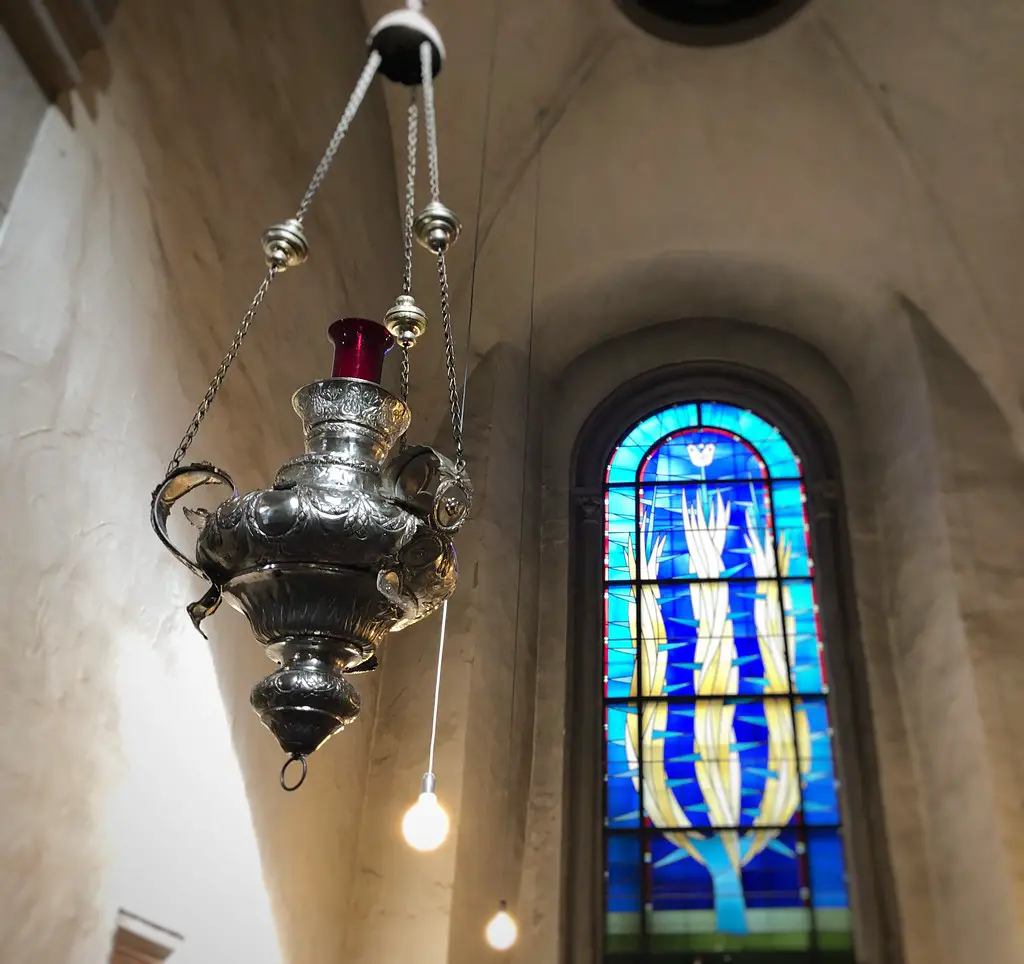
A former Benedictine abbey with a rich history dating back to the 11th century, located in the oldest city in Germany, Trier.
What to see or do: Visitors can admire the Romanesque architecture of the abbey church, which was built in the 12th century and features intricate sculptures and frescoes.
The adjoining cloister and gardens are also worth exploring, offering a peaceful and relaxing atmosphere.
Don’t miss: The impressive collection of religious art and artifacts on display in the adjoining museum, including illuminated manuscripts, sculptures, and paintings.
Insider travel tips: It’s worth joining a guided tour to fully appreciate the history and significance of the abbey.
And don’t forget to visit the nearby Porta Nigra, a Roman city gate that’s one of the most iconic landmarks in Trier.
10. Trier Toy Museum
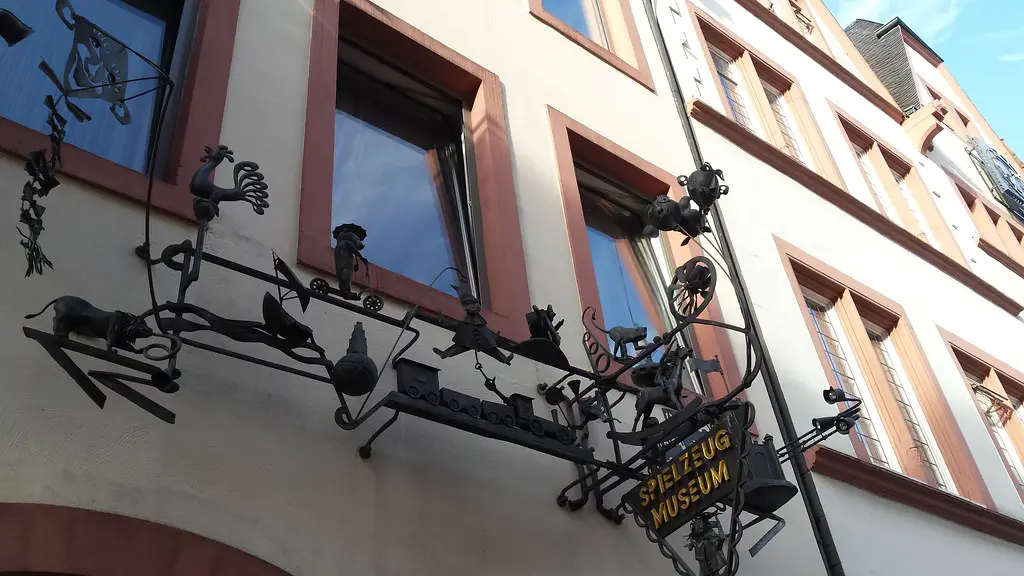
A museum dedicated to showcasing a large collection of antique toys, located in Trier, Germany.
What to see or do: Explore the vast collection of antique toys, including dollhouses, tin figures, trains, teddy bears, and more.
There are 13 rooms filled with toys, making it a fun and nostalgic experience for visitors of all ages.
Don’t miss: Make sure to check out the old-fashioned carousel in the center of the museum, which visitors can ride.
Also, keep an eye out for the special exhibits that showcase unique and rare toys.
Insider travel tips: – Give yourself plenty of time to explore the museum, as there is a lot to see.
11. Rheinisches Landesmuseum Trier
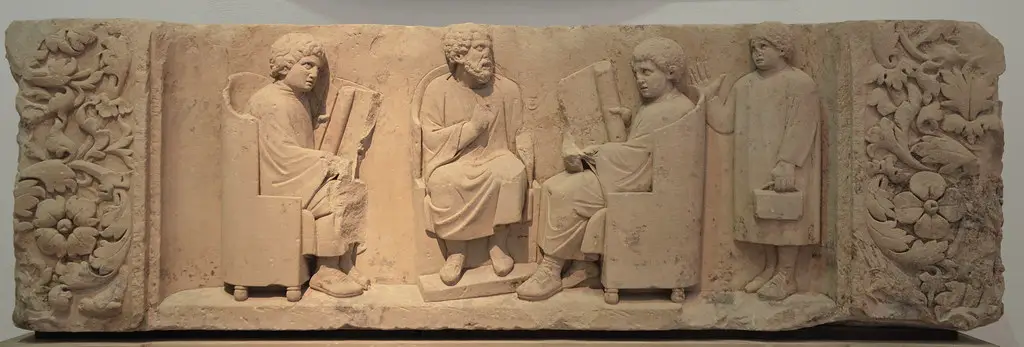
The Rheinisches Landesmuseum Trier is one of the oldest museums in Germany, featuring Roman artifacts and treasures from the region.
What to see or do: Explore the rich history of Trier through the museum’s extensive Roman collection, including mosaics, statues, and everyday objects.
The museum also features exhibits on the Middle Ages and modern history of the region.
Don’t miss: Be sure to see the impressive Porta Nigra gate, a UNESCO World Heritage Site, which is located just a few steps away from the museum.
Additionally, the museum’s impressive collection of Roman glass and jewelry is not to be missed.
Insider travel tips: Consider purchasing a combination ticket, which includes admission to several other important sites in Trier, including the Amphitheater and the Imperial Baths.
Audio guides are available in several languages to help visitors fully appreciate the rich history on display.
12. Barbara Thermae
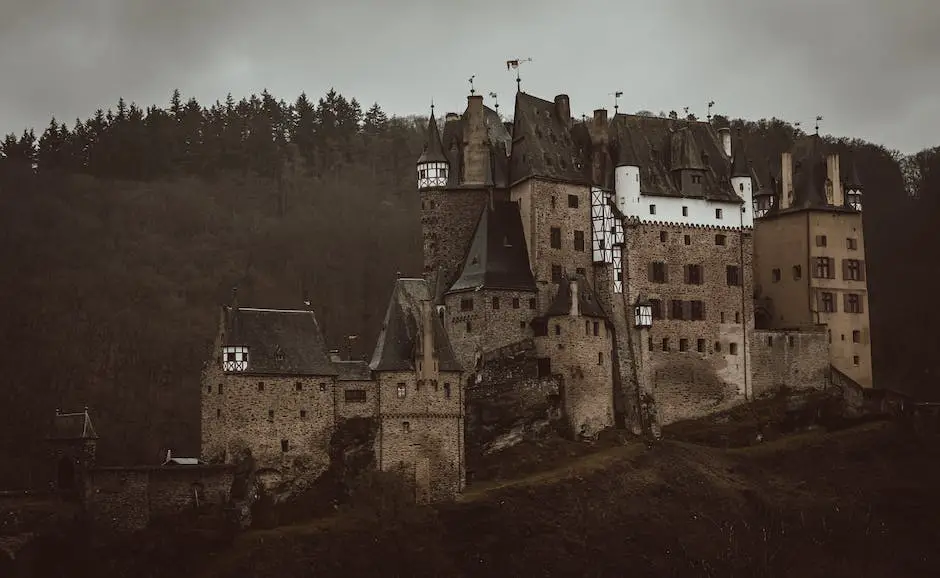
Barbara Thermae is a Roman-style bathhouse in the historic city of Trier, Germany, believed to have been built in the 2nd century AD.
What to see or do: Visitors can explore the extensive ruins of the bathhouse, which include the caldarium (hot room), tepidarium (warm room), and frigidarium (cold room).
The site also features a reconstructed Roman garden and a museum with exhibits about the history of the bathhouse.
Don’t miss: The highlight of Barbara Thermae is the 10-meter-high vaulted ceiling in the frigidarium, which features intricately decorated stucco work and is considered one of the finest examples of Roman vaulting still in existence.
Insider travel tips: – Visit in the morning or late afternoon when the site is less crowded.
13. Kornmarkt
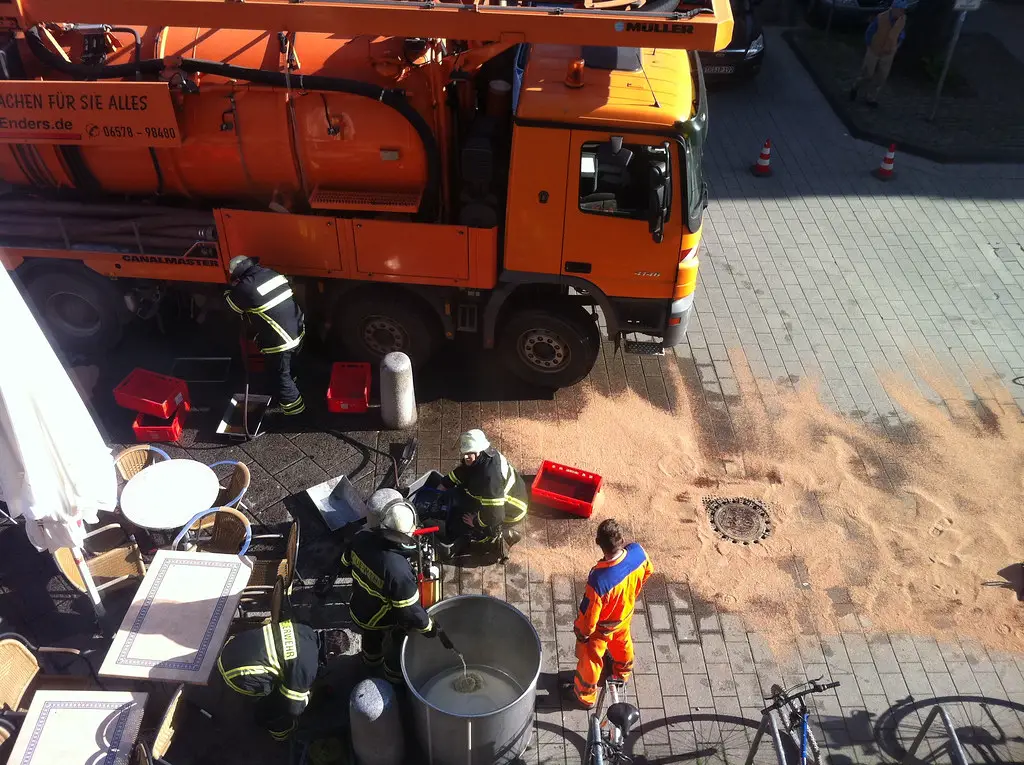
Kornmarkt is a beautiful historic square located in the heart of Trier, Germany.
What to see or do: Visitors can admire the charming architecture of buildings that surround the square and take a stroll through the surrounding streets.
The square is also known for its vibrant market culture, serving as a popular spot for various markets and exhibitions throughout the year.
Don’t miss: Don’t miss the beautiful fountain in the center of the square.
The fountain features a statue of Trier’s famous resident, Karl Marx, as well as other important figures from the city’s history.
Insider travel tips: The square can get quite crowded during peak tourist season, so it’s recommended to visit either in the early morning or late evening to avoid crowds.
Additionally, the surrounding streets offer plenty of cafes and restaurants where visitors can grab a coffee or have a meal.
14. House of the Three Magi

A historic building in Trier, Germany that is believed to be the location where the Three Wise Men stayed after visiting baby Jesus.
What to see or do: Visitors can admire the unique architecture of the house, which features a combination of Roman, Gothic, and Renaissance styles.
The building currently houses a restaurant and a gift shop.
Don’t miss: The beautiful frescoes on the ceiling of the house, which depict scenes from the Bible, including the visit of the Three Magi.
Insider travel tips: The house is located in the historic center of Trier, which is easily accessible on foot.
Consider visiting early in the morning or late in the afternoon to avoid crowds.Don’t forget to try some traditional German dishes at the restaurant located inside the house.
15. Simeonstift Museum
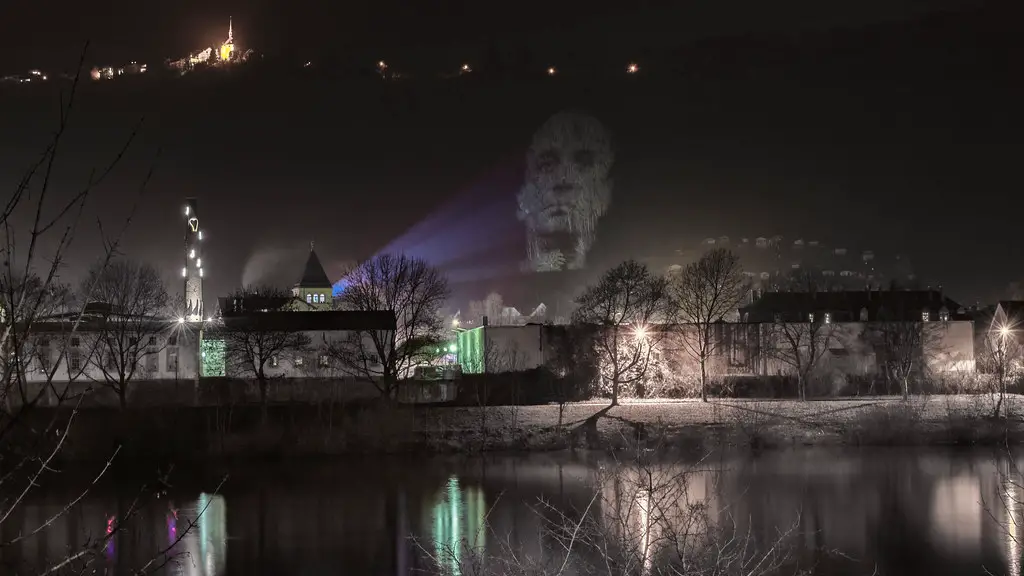
A museum located in the heart of Trier that showcases a vast collection of religious art and artifacts.
What to see or do: Explore the extensive collection of religious art and artifacts from the Romanesque to the Baroque period.
Admire the intricate details of the sculptures, paintings, and other works of art.
Don’t miss: The stunning Cathedral Treasury, which houses an impressive collection of relics and liturgical objects.
Make sure to check out the Holy Robe, said to be the seamless garment of Jesus.
Insider travel tips: It’s best to visit the museum in the morning as it gets quite busy in the afternoon.
There are several guided tours available so be sure to join one to learn more about the exhibits.
Note that photography is not allowed inside the museum.